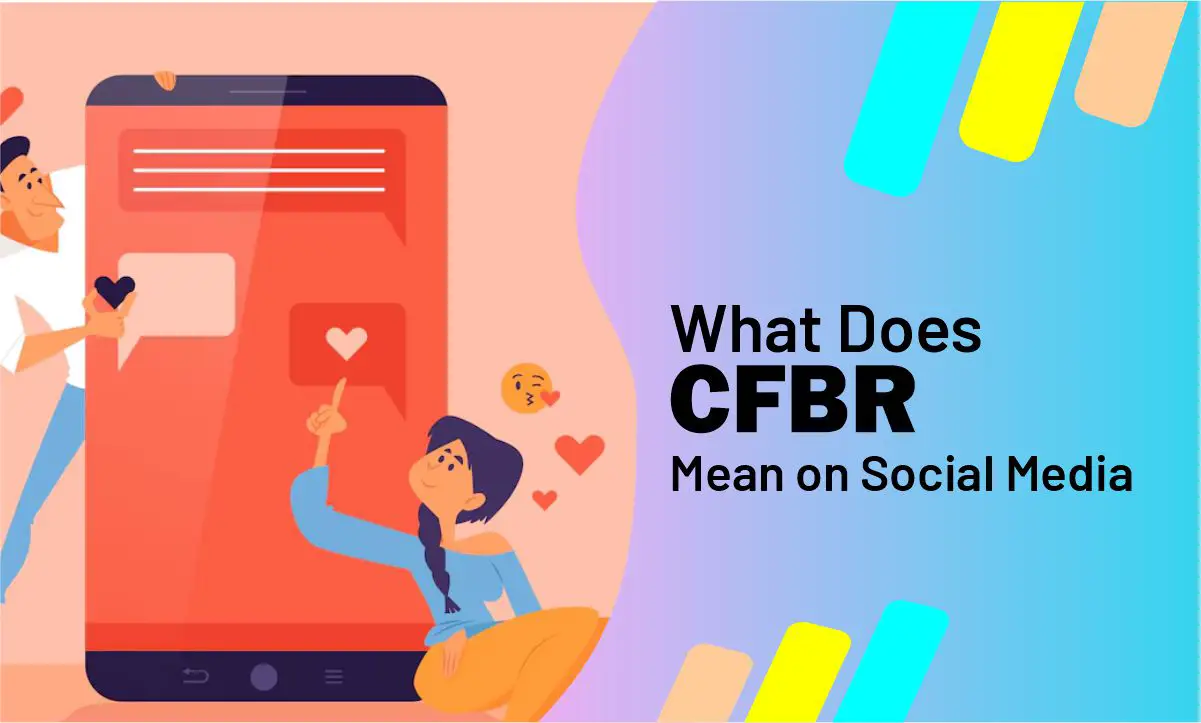Did you know that nearly 70-80% of people who use social media incorporate slang, acronyms, and shorthand expressions into their posts and interactions? This percentage spikes dramatically among Gen Z users, where over 90% use such terms to communicate quickly and effectively. As a result, understanding digital lingo has become essential for anyone who wants to stay relevant and engaged online.
One of the lesser-known but increasingly popular acronyms on platforms like LinkedIn, Facebook, and Instagram is CFBR. If you’ve seen this term pop up in your feed and wondered what it means or how to use it effectively, you’re in the right place.
In this in-depth guide, we’ll explore everything about CFBR—from its meaning and origin to how and where to use it properly, its advantages and disadvantages, and best practices to optimize engagement without appearing spammy.
What Does CFBR Stand For?
CFBR stands for “Commenting For Better Reach” or “Comment For Better Reach”. It’s used primarily to signal an intention to boost a post’s visibility through strategic engagement. On platforms where the algorithm favors interaction—such as likes, comments, shares, and saves—getting people to comment on a post can significantly increase its reach.
For instance, commenting on someone’s post using “CFBR” tells the algorithm that the content is valuable, prompting it to show that post to a broader audience. Likewise, users who include “CFBR” in their own posts often do so to encourage their followers to engage.
Where Did CFBR Come From?
CFBR emerged in the late 2010s, coinciding with a major shift in how social media platforms prioritize content. Platforms like LinkedIn and Instagram began to reward posts that received meaningful interactions rather than just passive likes.
As LinkedIn became more popular among professionals seeking to build personal brands or find job opportunities, users discovered that frequent and relevant comments on their posts dramatically improved visibility. Thus, CFBR began as a grassroots acronym, gaining traction within online networking communities.
Its adoption has now spread to other platforms that prioritize engagement, becoming a common strategy in digital marketing, influencer culture, and professional networking.
Platforms Where CFBR is Most Common
CFBR is not exclusive to one platform. It is used in any environment where increased engagement leads to better visibility. Let’s break down how CFBR is used across different social media platforms:
1. LinkedIn
LinkedIn is perhaps the most well-known platform where CFBR is used widely. Here, professionals use it to promote:
- Career updates
- Job searches
- Business achievements
- Industry insights
People use CFBR to indicate that their comment is intended to boost the reach of a colleague’s or connection’s post, often with thoughtful replies that encourage continued discussion.
2. Instagram
Influencers, small business owners, and creators frequently use CFBR on Instagram to:
- Boost the reach of reels, carousels, and stories
- Increase visibility on explore pages
- Encourage interaction through captions
It’s also common in “engagement pods”—groups where members comment on each other’s posts to collectively improve reach.
3. Facebook
Users leverage CFBR in both personal and business contexts:
- To promote event pages
- To increase interaction in groups
- To improve the visibility of photos, videos, and business promotions
4. TikTok
While CFBR is less popular on TikTok, some creators use it in the comments section to push their videos onto the “For You” page. Still, engagement tactics like sharing and duets are more prevalent on TikTok.
5. X (formerly Twitter)
Although not widely used on X, some users include CFBR in replies or quote tweets to promote conversations and extend tweet visibility.
How to Use CFBR Effectively

Using CFBR is relatively straightforward, but effectiveness comes from context and relevance. Below are several ways to integrate CFBR into your social media activities:
1. In Comment Sections
Offer thoughtful comments on others’ content while adding “CFBR” to show support.
Example:
“This is a brilliant perspective on digital marketing. Thanks for sharing! CFBR to boost reach.”
2. In Your Captions
Encourage engagement by asking followers to leave a comment, followed by CFBR.
Example:
“What do you think about AI-generated content? Drop your thoughts below! CFBR appreciated.”
3. In Support Groups and Pods
Use CFBR to notify group members that you’ve engaged with their content and expect mutual support.
Example:
“Just commented on your new post—great insights! CFBR.”
4. During Live Events and Webinars
If you’re hosting an event or speaking live, ask viewers to comment using CFBR to promote interaction.
Example:
“Enjoying the session? Drop a CFBR comment to help others find this live!”
Similar Acronyms and Their Meanings

To better understand CFBR, it helps to know some commonly associated acronyms used for mutual engagement:
| Acronym | Meaning | Use Case |
|---|---|---|
| L4L | Like for Like | Encourages mutual likes on posts |
| C4C | Comment for Comment | Promotes reciprocal commenting |
| F4F | Follow for Follow | Used by users who mutually follow each other |
| S4S | Share for Share | Encourages cross-promotion |
| EBR | Engagement Boost Request | Used in groups for collaborative support |
These acronyms are part of broader “engagement hacking” strategies that help users grow organically while maintaining community support.
Examples of CFBR in Real Social Media Posts
Here are some examples of how people incorporate CFBR in posts and comments:
- “Just launched my podcast! CFBR to help spread the word.”
- “Here’s my latest illustration on Instagram! Would love your feedback—CFBR if you enjoyed it.”
- “Dropped some career advice today—let me know your thoughts. CFBR to reach more professionals.”
- “Feeling grateful for hitting 10K followers—CFBR so others can join our journey.”
Pros and Cons of Using CFBR
Pros:
- Enhanced Visibility: Helps content surface on more feeds due to higher engagement.
- Community Building: Encourages users to interact meaningfully.
- Better Algorithm Ranking: Improves ranking signals for the algorithm.
- Organic Growth: Offers a free method of content promotion.
Cons:
- Risk of Spam: Overusing CFBR can come off as desperate or robotic.
- Not Universally Understood: Some users might not recognize the acronym.
- Low-Quality Comments: Risk of receiving generic or meaningless comments.
- Potential for Shadowbans: Excessive engagement baiting might trigger spam filters.
Best Practices for Using CFBR

- Know Your Audience: Avoid using CFBR if your followers may not understand it.
- Limit Frequency: Use sparingly to maintain authenticity.
- Context Is Key: Use CFBR only in relevant situations.
- Avoid Automation: Don’t use bots or auto-comments with CFBR.
- Pair With Value: Provide meaningful content alongside CFBR prompts.
Tips to Get More Comments Without Using CFBR

- Pose Questions: Encourage comments by ending posts with open-ended questions.
- Create Polls & Quizzes: Interactive content sparks engagement naturally.
- Leverage Story Features: Use IG Stories’ question stickers or LinkedIn polls.
- Run Giveaways: Ask for comments as part of contest entries.
- Tag Relevant People: Increase reach by tagging users who’ll likely interact.
Conclusion
Social media success in 2025 is deeply intertwined with meaningful engagement, and understanding acronyms like CFBR gives users an edge in navigating this space effectively. Whether you’re a casual user, a business owner, or a content creator, using CFBR strategically can amplify your content’s visibility and strengthen your community presence.
However, like all digital strategies, balance is key. Use CFBR as a tool—not a crutch—to cultivate genuine relationships and grow your digital presence organically.
FAQs
What does CFBR mean in texting?
CFBR stands for “Commenting For Better Reach”—often used to signal support on social posts.
Is CFBR effective on LinkedIn?
Yes, it can help increase post visibility if used with relevant and valuable content.
What is the #CFBR hashtag?
#CFBR is a community-driven hashtag used to promote engagement and visibility among like-minded professionals or creators.
Should businesses use CFBR?
Yes, but sparingly and strategically. Always combine CFBR with high-quality content to maintain brand integrity.
Read these also:
- What Does ISO Mean
- What Does “Moots” Mean
- What Does GOAT Mean
- What Does “W – WIN” Mean
- What Does TBF Mean
- What Does “Trending” Mean
- What Does Side Eye Mean
- What Does H/T Mean
- What Does “FR” Mean
- What Does ‘IDGI’ Mean
- What Does IYKYK Mean
- What Does “WTMS” Mean
- What Does “Slay” Mean
- What Does CFS Mean
- What Does “Delulu” Mean
- What Does TFW Mean
- What Does SMH Mean
- What Does TBT Mean
- What Is a Profile Picture (PFP)
- What Does “Spill The Tea” Mean
- What Does Bussin Mean
- What Does ‘Gram’ Mean
- What Does OPP Mean
- What Does Finna Mean
- What Does “POV” Mean
- What Does Cringe Mean

